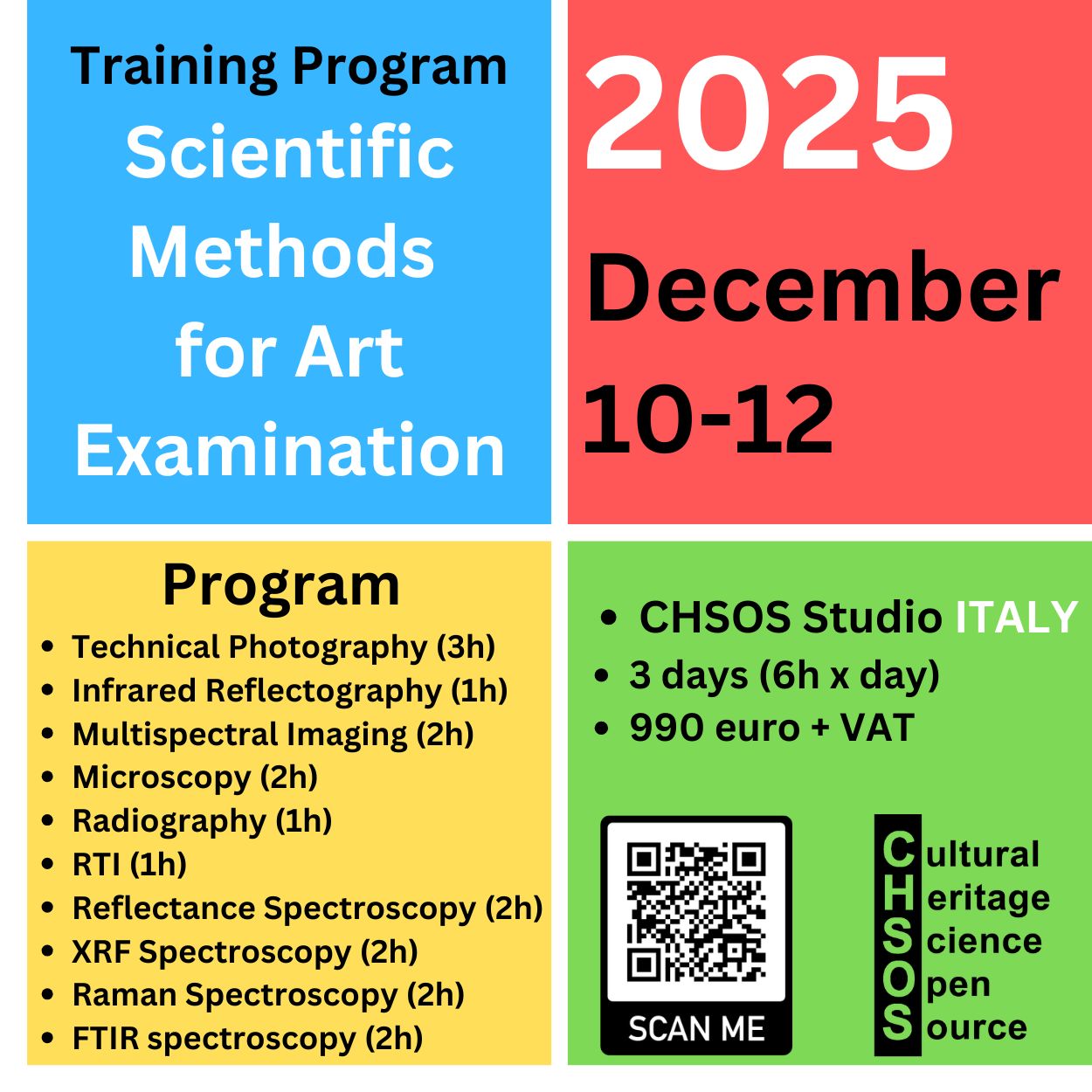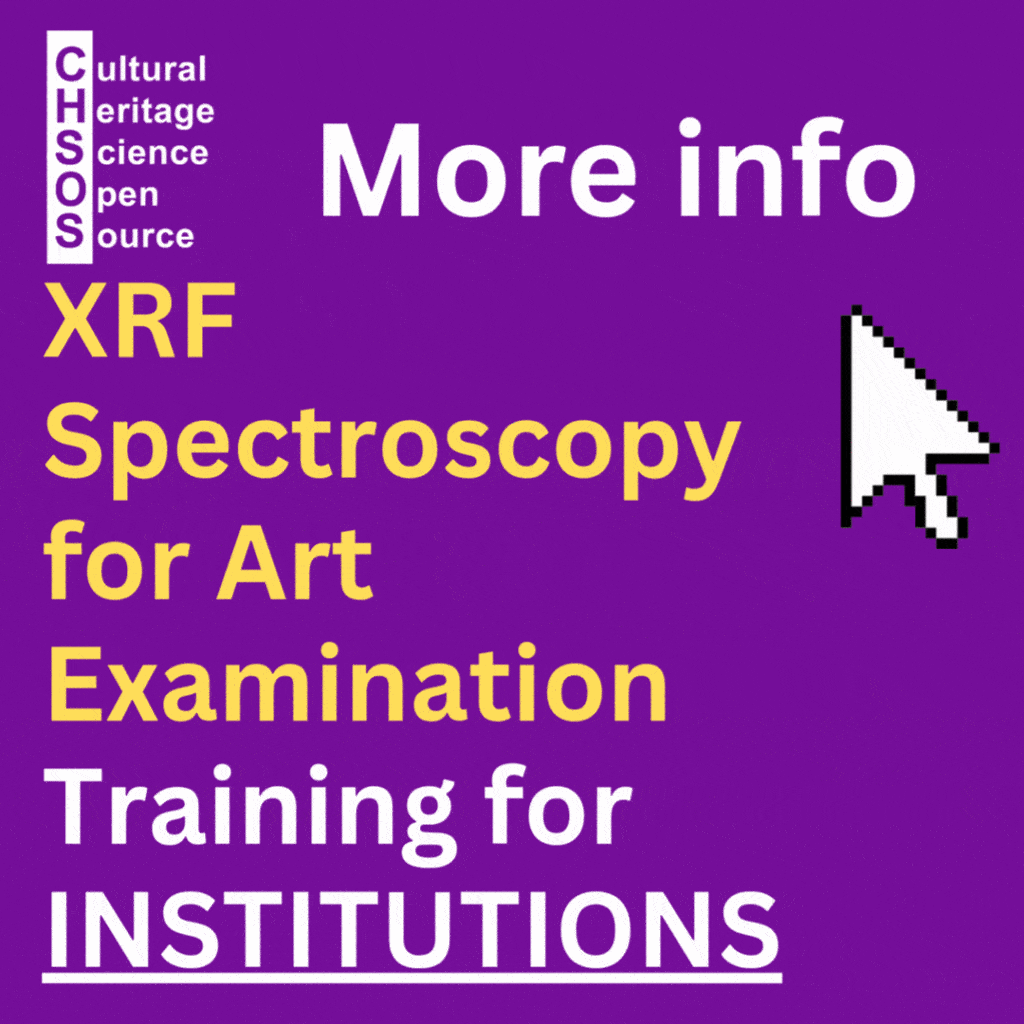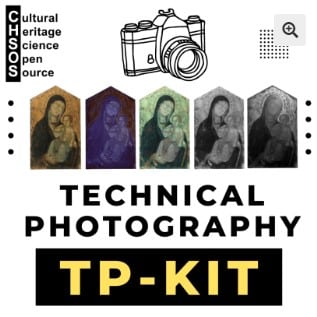Home » Products » Pigments Checkers » Pigments Checker » Pigments Checker – Standard – Pigments’ List » blue bice
Blue bice
This page presents the spectroscopic analysis of blue bice.
The pigment has been examined using XRF spectroscopy, Raman spectroscopy, FTIR spectroscopy, and reflectance spectroscopy. These complementary techniques provide valuable insights into the pigment’s composition and structure.
This page aims to show which analytical methods are most effective for identifying this pigment in artworks and historical materials. By comparing results across different techniques, it serves as a practical reference for heritage science, conservation, and pigment analysis.
Blue bice is the artificial form of azurite. Numerous early recipes for the preparation of basic copper carbonate are known from the 17th century.
Manufacturer / product code: Kremer / 10184
Chemical description: artificial basic copper carbonate with approximately the same chemical composition as azurite. Kremer PDF
Color: blue
Color Index: PB30
More info: Pigments Through The Ages
Raman Spectroscopy 532 nm – ElviRa Spectrometer for Art
Raman Spectroscopy 532 nm (ElviRa spectrometer) Pigments-Checker Database (65195 downloads )

Raman spectroscopy 785 nm
Pigments (powder, no binder)

Raman Spectroscopy 785 nm Pigments (pure, no binder) (67961 downloads )
Pigments with acrylic binder (Pigments Checker)

Raman Spectroscopy 785 nm Pigments-Checker Database (68138 downloads )
Pure pigments (no binder, just powder)
DOWNLOAD Free Raman Database
DOWNLOAD paper: “Pigments Checker version 3.0, a handy set for conservation scientists: A free online Raman spectra database”

Raman spectroscopy 1064 nm
Pigments (powder, no binder)

Raman Spectroscopy 1064 nm Pigments-Checker Database (50939 downloads )
XRF spectroscopy – blue bice
XRF Spectroscopy Pigments-Checker Database (77577 downloads )
DOWNLOAD previous database from Pigments Checker V.3 DOWNLOAD paper: R. Larsen, N. Coluzzi, A. Cosentino “Free XRF Spectroscopy database of Pigments Checker” Intl Journal of Conservation Science.

Reflectance Spectroscopy (200-1000 nm) – GorgiasUV Spectrometer
Reflectance Spectroscopy (200-1000 nm) (GorgiasUV) Pigments-Checker Database (81096 downloads )

Reflectance spectroscopy – Gorgias Spectrometer for Art
Reflectance Spectroscopy (350-950 nm) (Gorgias) Pigments-Checker Database (88000 downloads )
NIR Reflectance spectroscopy
NIR-Reflectance Spectroscopy (930-1690 nm) Pigments-Checker Database (77068 downloads )

FT-IR Spectroscopy (Non-invasive Diffuse Reflectance Probe)

FTIR Diffuse Reflectance Spectroscopy Pigments-Checker Database (68815 downloads )
FTIR non-invasive Spectroscopy Pigments (pure, no binder) Database (70597 downloads )
Blue bice is a historical pigment prized for its soft, greenish-blue tone. Originally, the name referred to ground natural azurite, a copper carbonate mineral mined in Europe and the Middle East. By the late 17th century, the term also encompassed artificial copper blues—precipitated pigments produced by treating copper with vinegar and chalk. This synthetic form, often called blue verditer, was cheaper and more consistent in color than natural azurite, though usually less brilliant.
Artists valued it for its affordability compared to ultramarine, using it in skies, drapery, and architectural details. However, like other copper-based pigments, it could darken or turn green in oil due to chemical reactions.







